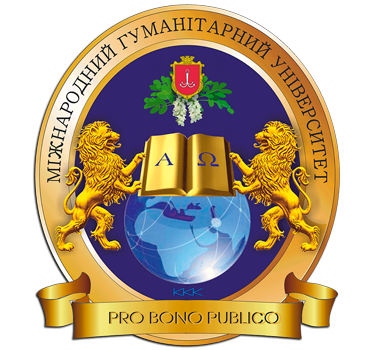MODERN TRENDS IN ANESTHETIC MANAGEMENT IN SURGERY OF ENT ORGANS
Keywords:
septoplasty, surgical field, anesthesia, analgesia, adjuvants.Abstract
Introduction. Nowadays, the issues of improving anesthesiology support of surgical interventions in ENT practice remain relevant. And many questions of anesthesia, perioperative analgesia, hemostasis, regulation of the autonomic nervous system require further solutions. Aim. To study the features and possibilities of improving general anesthesia for plastic surgery of the nasal septum using new adjuvants. Materials and methods. We studied the indicators of 89 patients who underwent septoplasty under intravenous anesthesia (propofol, fentanyl, tracrium) with mechanical ventilation + local anesthesia (lidocaine). The patients were divided into 3 groups - “Control” (n = 28), “Paracetamol” (n = 31) and “Dexmedetomidine” (n = 30). Such indicators as the evaluation of the surgical field by the surgeon on a 10-point scale and its correlation with other indicators, the duration of the operation and anesthesia, the dose of anesthetics and analgesics were studied. Results. In the group of patients who underwent dexmedetomidine infusion, an operative field within 9.87 ± 0.06, in the paracetamol group - 6.03 ± 0.09, in the control group - 5.04 ± 0.14, respectively (p <0.001 ) was evaluated. The duration of anesthesia and surgery, the dose of propofol and fentanyl were less in the paracetamol group and significantly less in the dexmedetomidine group (p <0.001). In patients of all groups, a high degree of inverse correlation was observed between the evaluation of the operative field by the surgeon and the volume of blood loss, the duration of the operation, the duration of general anesthesia, the dose of analgesics and anesthetics (p <0.001). Соnclusion. The use of new adjuvants in the composition of anesthetic management of the nasal septum plastics leads to improved visualization of the surgical field during surgery, reducing the time of surgery and general anesthesia, reducing the dose of analgesics and anesthetics.
References
Алексеева Н.С., Азнабаева Л.Ф., Антонив В.Ф. Оториноларингология: нац. рук./ Алексеева Н.С., Азнабаева Л.Ф., Антонив В.Ф. // ГЭОТАР-Медиа, 2009. С. 432.
Drozdowski, A., Sieśkiewicz, A., Siemiatkowski, A. Reduction of intraoperative bleeding during functional endoscopic sinus surgery./ A. Drozdowski, A. Sieśkiewicz, A. Siemiatkowski // Anestezjol Intens Ter. – 2011. – Vol. 43(1). – P. 45-50.
Wladis, E.J., Kattato, D.F., De, A. Intravenous Acetaminophen in Orbital Surgery./ E.J. Wladis, D.F. Kattato , A. De.// Ophthalmic Plast Reconstr Surg. –2016. – Vol. 32(3). – P. 211-3. doi: 10.1097/IOP. 0000000000000470.
Comparison of the effects of dexmedetomidine and remiphentanyl on emergence agitation after sevoflurane anesthesia in adults undergoing septoplasty operation: a randomized double-blind trial. / G. Kavalci [et al.] // Eur Rev Med Pharmacol Sci. – 2013. – Vol. 17(22). – P. 3019-2023.
Comparison between dexmedetomidine and remifentanil infusion in emergence agitation during recovery after nasal surgery: A randomized double-blind trial. / R. Polat [et al.] // Anaesthesist. – 2015. – Vol. 64(10). – P. 740-6. doi: 10.1007/s00101-015-0077-8
Fan Q, Hu C, Ye M, Shen X. Dexmedetomidine for tracheal extubation in deeply anesthetized adult patients after otologic surgery: a comparison with remifentanil. / Q. Fan [et al.] // BMC Anesthesiol. – 2015. – Vol.15. – P. 106. doi: 10.1186/s12871-015-0088-7.
Effect of dexmedetomidine on perioperative stress and postoperative pain in patients with radical resection of esophageal cancer under combined thoracoscope and laparoscope. / C.S. Li [et al.] // Zhonghua Yi Xue Za Zhi. – 2018. – Vol. 98(46). – P. 3778-3783. doi: 10.3760/cma.j.issn.0376-2491.2018.46.011.
Tsujikawa, S., Ikeshita, K. Low-dose dexmedetomidine provides hemodynamics stabilization during emergence and recovery from general anesthesia in patients undergoing carotid endarterectomy: a randomized double-blind, placebo-controlled trial. / S. Tsujikawa, K. Ikeshita // J Anesth. – 2019. doi: 10.1007/s00540-019-02612-w.
Улиткина О.Н. Органопротекторные свойства дексмедетомидина. / Улиткина О.Н. и др. // Вестник анестезиологии и реаниматологии. – 2018. – Том 15. – № 2. – С. 55 – 61.
Can Dexmedetomidine Influence Recovery Profiles from General Anesthesia in Nasal Surgery? / H.S. Lee [et al.] // Otolaryngol Head Neck Surg. – 2018. – Vol. 158(1). – P. 43-53. doi: 10.1177/0194599817733735.
Айварджі О.О., Кобеляцький Ю.Ю. Стратегія поліпшення анестезіологічного забезпечення при септопластиці шляхом застосування нових ад’ювантів./ О.О. Айварджі, Ю.Ю. Кобеляцький // ScienceRise. Medical Science. – 2018. – Vol. 5(25). – P. 4-8.
Айварджи А. А., Кобеляцкий Ю. Ю. Пути повышения эффективности контроля стрессового и гемодинамического ответа при септопластике./ О.О. Айварджі, Ю.Ю. Кобеляцький // Вестник проблем биологии и медицины. – 2018. – Выпуск 2 (144). – С.127 – 131.






